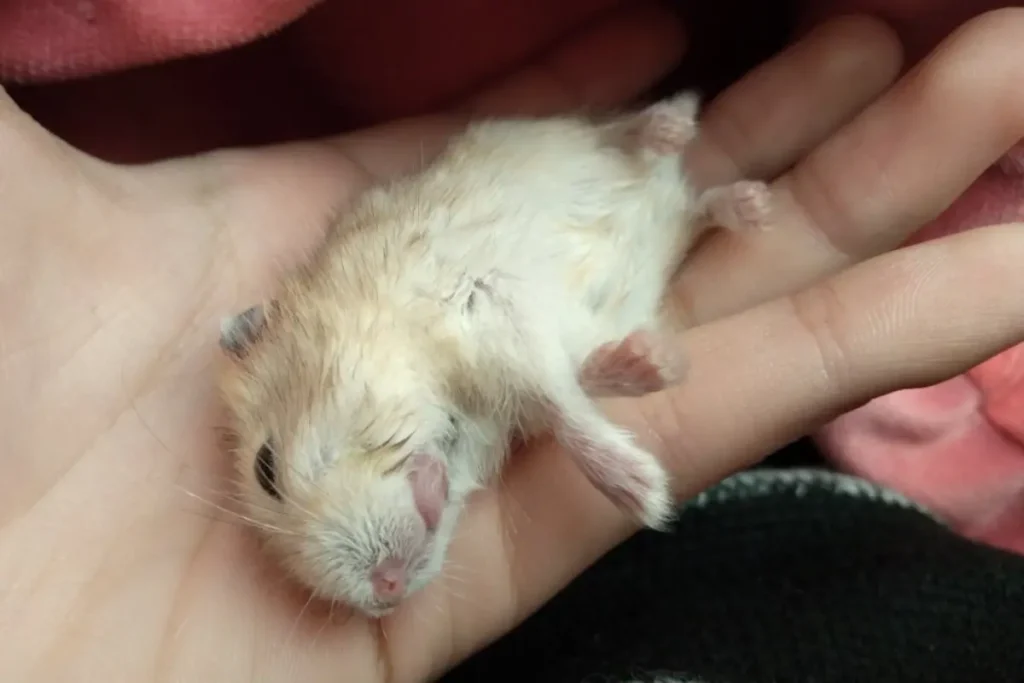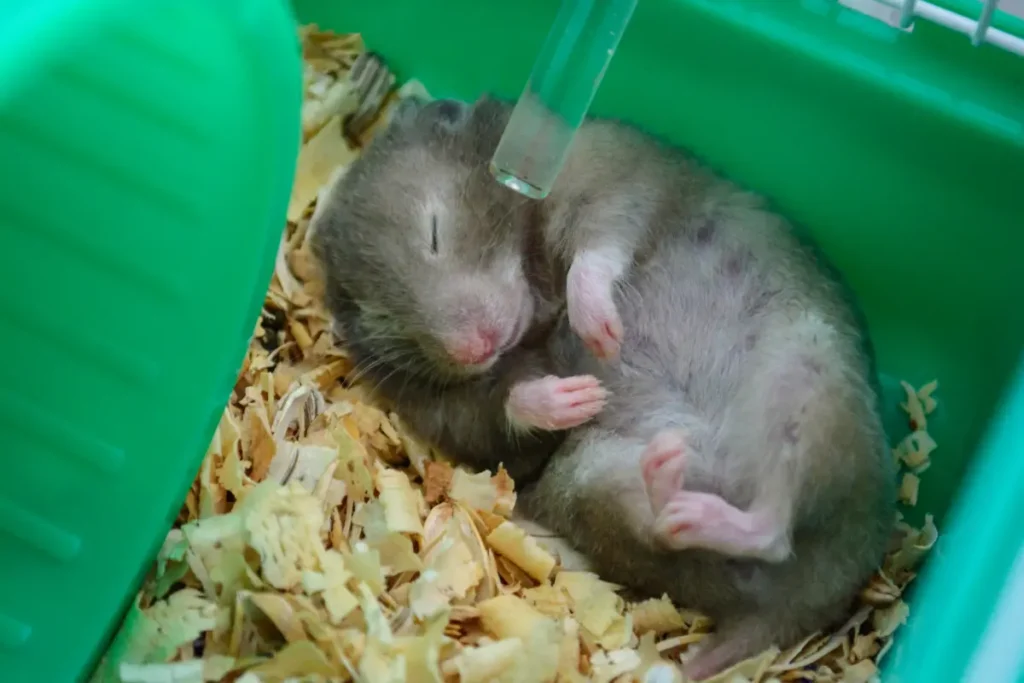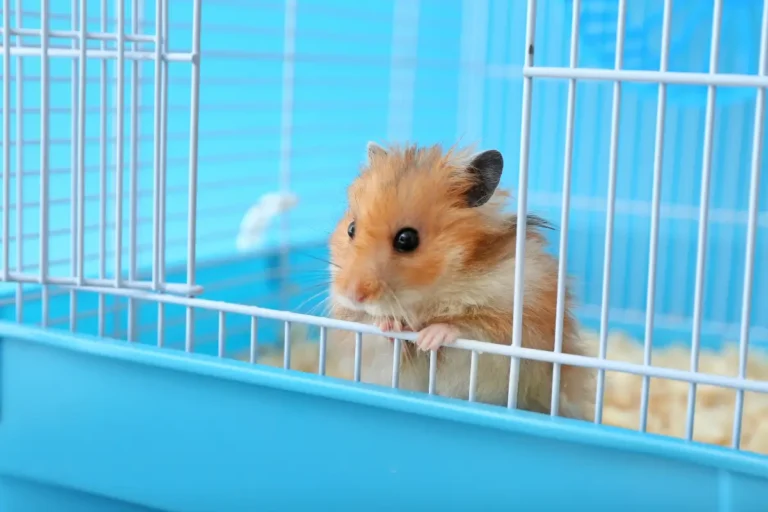Is Your Hamster Hibernating or Dead? How to Tell the Difference
As a hamster owner, few experiences are more distressing than finding your furry friend motionless and cold in their cage. In moments like these, it’s crucial to determine whether your hamster is in a state of torpor (a lighter form of hibernation) or if it has sadly passed away.
Understanding the signs of hibernation versus death can help you take appropriate action for your pet’s well-being.
Do Hamsters Really Hibernate?
Contrary to popular belief, domestic hamsters don’t hibernate the way some wild animals do. In the wild, certain hamster species may enter a deep hibernation during winter when food is scarce. This helps them conserve energy and survive until more favorable conditions return.
In domestic environments, however, hamsters may enter torpor, a lighter, temporary state where their metabolic rate slows down drastically to conserve energy. Unlike true hibernation, torpor is a shorter-term survival mechanism and can last from a few hours to a few days.
Hamsters may enter torpor when:
- Temperatures fall below 65°F (18°C)
- They experience significant stress or food scarcity
- Their daylight exposure decreases, mimicking winter conditions

Species Differences
Different hamster species respond to cold in unique ways:
- Syrian Hamsters (also known as golden hamsters) are more prone to entering torpor, likely due to their origins in Syria’s arid regions, where they adapted to seasonal changes.
- Dwarf Hamsters (such as Roborovski, Campbell’s, and Winter White hamsters) are less likely to enter true hibernation, though they can still experience torpor if conditions become too cold or stressful.
In this state, hamsters appear extremely still, and their metabolic processes slow down significantly. Torpor can be helpful for wild animals during cold weather but can be risky for domesticated hamsters that are not accustomed to surviving in such conditions.
How to Tell if Your Hamster is Hibernating
A hibernating hamster may look completely still and cold, but there are subtle signs that can help you distinguish torpor from death. Here are key indicators to check for:
1. Slow Breathing and Heartbeat
During torpor, a hamster’s breathing rate and heartbeat slow down dramatically. They may take only one breath every couple of minutes, which can be hard to detect without close observation.
- How to Check: Observe the chest area for slight movements or place your finger gently near the nose to feel for a faint, warm breath. You may need to wait several minutes to detect any subtle signs of breathing.
2. Body Temperature
A hamster in torpor will feel cool to the touch but not icy. This lower temperature helps conserve energy but should still retain some warmth.
- How to Check: Carefully touch the hamster’s belly. A hamster in torpor will be cool and soft to the touch, while a deceased hamster will feel cold and rigid as rigor mortis sets in.
3. Flexibility of Limbs
A hamster in torpor will have relaxed, flexible limbs and a generally soft body, even if slightly cooler than normal. In contrast, a deceased hamster’s body will become stiff due to rigor mortis within hours of passing.
- How to Check: Gently lift or move a limb. If the hamster is in torpor, the limbs should have some flexibility. A deceased hamster’s limbs will feel rigid and immovable.

4. Response to Stimulation
Hibernating hamsters may show minimal but visible responses to gentle stimulation. They may twitch, flex their whiskers, or respond faintly to warmth.
- How to Check: Stroke your hamster gently or blow warm air near its face. If they respond with any movement, such as a whisker twitch or slight muscle contraction, they are likely hibernating.
5. Whisker and Ear Movement
Hamsters in torpor may show tiny movements in their whiskers or ears if lightly stimulated.
- How to Check: Gently brush near their whiskers or softly stroke their ears. Small twitches or movements can indicate that your hamster is alive but in torpor.
6. Odor
A hibernating hamster will not emit an odor. A foul odor is a strong indicator of death as decomposition begins.
Signs of a Deceased Hamster
If your hamster shows no signs of life even after observation, they may have passed away. Here are definitive signs:
- Cold, Stiff Body: Rigor mortis typically sets in within a few hours after death, making the body cold and stiff.
- No Breathing or Heartbeat: Check carefully for several minutes to confirm the absence of breath or heartbeat.
- Unresponsive to Stimulation: A deceased hamster will not respond to touch, warmth, or light stimulation.
- Foul Odor: After a day or two, a deceased hamster may begin to emit a strong, distinct odor.
- Discoloration: In some cases, a dead hamster’s body may begin to show signs of discoloration or bloating.
Hibernating vs. Deceased Hamster
| Signs | Hibernating Hamster | Deceased Hamster |
|---|---|---|
| Body Temperature | Cool but not icy | Cold and stiff |
| Breathing and Heartbeat | Extremely slow but present | Absent |
| Flexibility | Soft and pliable | Rigid due to rigor mortis |
| Response to Stimulation | May twitch or move slightly | No response |
| Odor | No odor | Foul odor may be present after a few days |
What to Do if Your Hamster is Hibernating (Torpor)
If you suspect your hamster is in torpor rather than deceased, you can try to gradually warm them up and bring them back to full alertness:
- Increase Ambient Temperature
Gradually raise the temperature of the room to above 20°C (68°F). If the hamster is hibernating, it should awaken within a few hours to a few days.
- Provide Warmth
Place a warm (not hot) water bottle wrapped in a towel near the hamster or use a heating pad on a low setting. This will gradually raise its body temperature and potentially awaken it from hibernation.

- Monitor for Movement
As the hamster warms up, look for any signs of movement or responsiveness. If the hamster starts to twitch, stretch, or show signs of awakening, it is likely in hibernation and will eventually fully wake up.
- Provide Water and Food
As your hamster begins to wake, offer fresh water and a small amount of food. You may also provide a small amount of sugar water or an electrolyte solution to boost its energy as it recovers.
- Observe for Signs of Revival
Revival from torpor can take anywhere from a few hours to an entire day. During this time, watch closely without frequently disturbing your hamster.
How to Prevent Torpor in Hamsters
To minimize the risk of your hamster entering torpor, consider the following measures:
- Maintain a Stable Temperature: Keep your hamster’s environment at a consistent temperature between 65°F and 75°F (18°C to 24°C). Avoid placing their cage near drafty areas, open windows, or air conditioning units, as sudden temperature drops can trigger torpor.
- Provide Adequate Bedding: Ensure your hamster has ample bedding material to burrow into, which helps regulate their body temperature. Materials like shredded paper or aspen shavings are suitable options.
- Ensure Access to Fresh Food and Water: Always provide fresh food and water to prevent your hamster from entering torpor due to food scarcity. Regularly check and replenish their supplies.
- Maintain Proper Lighting: Hamsters are sensitive to light patterns. Ensure they have a consistent light-dark cycle by placing their cage away from direct sunlight and avoiding abrupt changes in their light exposure.
- Monitor Their Behavior: Regularly observe your hamster’s activity levels and general behavior. If you notice any signs of torpor, such as lethargy or unresponsiveness, take immediate steps to warm them up as discussed earlier.
Conclusion: Know the Signs and Act Quickly
A hibernating hamster may appear lifeless, but careful observation can help you distinguish between torpor and death.
If your hamster is in torpor, gentle warmth and stimulation can help them revive. Maintaining a warm, stable environment helps prevent accidental torpor, ensuring your hamster stays healthy and comfortable.






